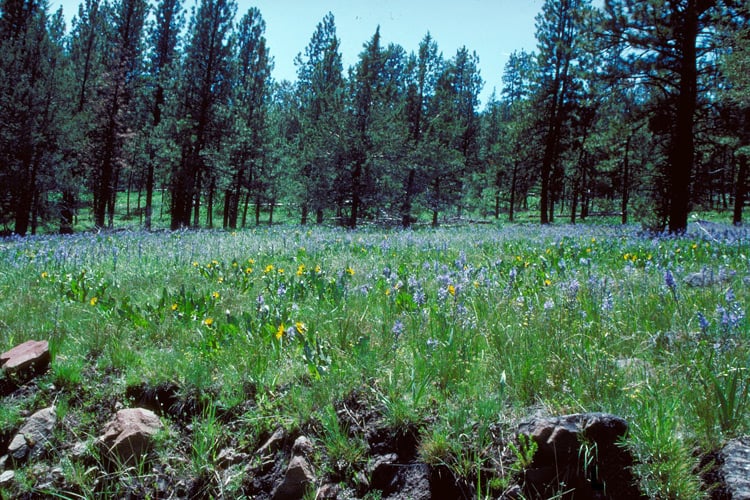Here it is, with some quotes below.
But Defenders of Wildlife says the draft rule ignores scientific recommendations on wildlife diversity protection.
Rodger Schlickeisen, president and CEO of Defenders of Wildlife said, “President Obama holds the future of our nation’s forests and wildlife heritage in his hands as his administration crafts the new rule governing national forest policy. His administration has an opportunity to lead us into a new century of forest management. Unfortunately, in its present form, the draft rule promises much more than it delivers, leaving the future of wildlife on 193 million acres of land belonging to the American people mostly up to chance.”
The nonprofit Sierra Forest Legacy, based in California, says, “At first reading, we note that the single most important measurable protection to ensure protection of wildlife, afforded by the 1982 regulations, has been removed entirely.”
The group is referring to the “Viability Standard” at 219.19 in the 1982 regulations, which states, “Fish and wildlife habitat shall be managed to maintain viable populations of existing native and desired non-native vertebrate species in the planning area.”
The 1982 Viability Standard continues, “For planning purposes, a viable population shall be regarded as one which has the estimated numbers and distribution of reproductive individuals to insure its continued existence is well distributed in the planning area.”
“In order to insure that viable populations will be maintained, habitat must be provided to support, at least, a minimum number of reproductive individuals and that habitat must be well distributed so that those individuals can interact with others in the planning area,” the Viability Standard concludes.
The Sierra Forest Legacy warns, “Without such clear direction for protecting wildlife, the new planning rule represents a step backward, suggesting that the agency has abdicated its long held responsibility for maintaining our national forests as the last refuge for the continent’s increasingly imperiled wildlife.”
Marty Hayden, vice president of policy and legislation with the public interest law firm Earthjustice, said, “The Forest Service’s draft rule shows that the Obama administration understands and supports the basic concepts of how to protect the indispensible watersheds on our National Forests, but, by failing to adopt enforceable standards, it falls short of guaranteeing the protections our country desperately needs.”
And
But conservationists are not convinced the draft planning rule will protect waters and wildlife. “It’s not just the streams, rivers, and wetlands outside my back door and yours that remain in trouble. Waters across the nation are threatened by a legacy of serious harm from forest and grazing land use on National Forest lands,” said Dr. Chris Frissell, director of science and conservation for the Pacific Rivers Council.
“This history is a principal reason why our native trout and salmon are in such tough shape today, and this means the new planning rule will need to take firm steps forward, not backward, to ensure the health of our watersheds and fisheries is restored,” he said.
“The rule still needs, among other things, clear direction to reduce harm to watersheds by removing and restoring forest roads, an established national minimum streamside buffer zone, and development and compliance with firm standards protecting waters and aquatic life,” said Dr. Frissell. “Good intentions are great, but in an ecosystem as complicated as a watershed, standards and a commitment to real monitoring are necessary to ensure that the agency’s actions in fact protect and restore the environment. This draft rule doesn’t get us there. ”
On the proposed rule’s treatment of science, Dr. Frissell said, “The rule still needs language to say it’s the Forest Service’s job to both bring the best available scientific information to the table and to actually use it as the basis for planning, and to implement and monitor the measurable standards that are necessary to ensure water resources and watershed health are in fact being protected and restored.”
I don’t know what Dr. Frissell means by using science as “the basis” for planning. But I also ran across testimony of Dr. Pielke, Sr. on climate change this week.
Decisions about government regulation are ultimately legal, administrative, legislative, and political decisions. As such they can be informed by scientific considerations, but they are not determined by them. In my testimony, I seek to share my perspectives on the science of climate based on my work in this field over the past four decades.
For those of you unfamiliar with his work, he describes other forcings than CO2 in a way accessible to the public (or at least, me) in his testimony here.

